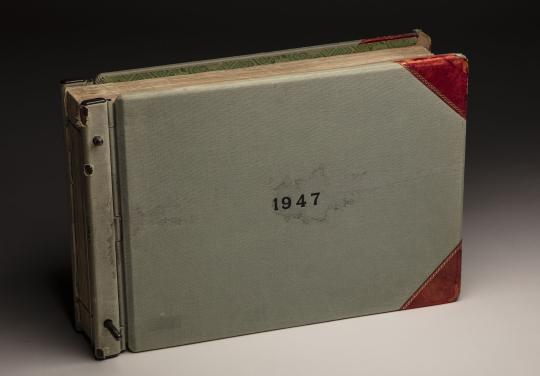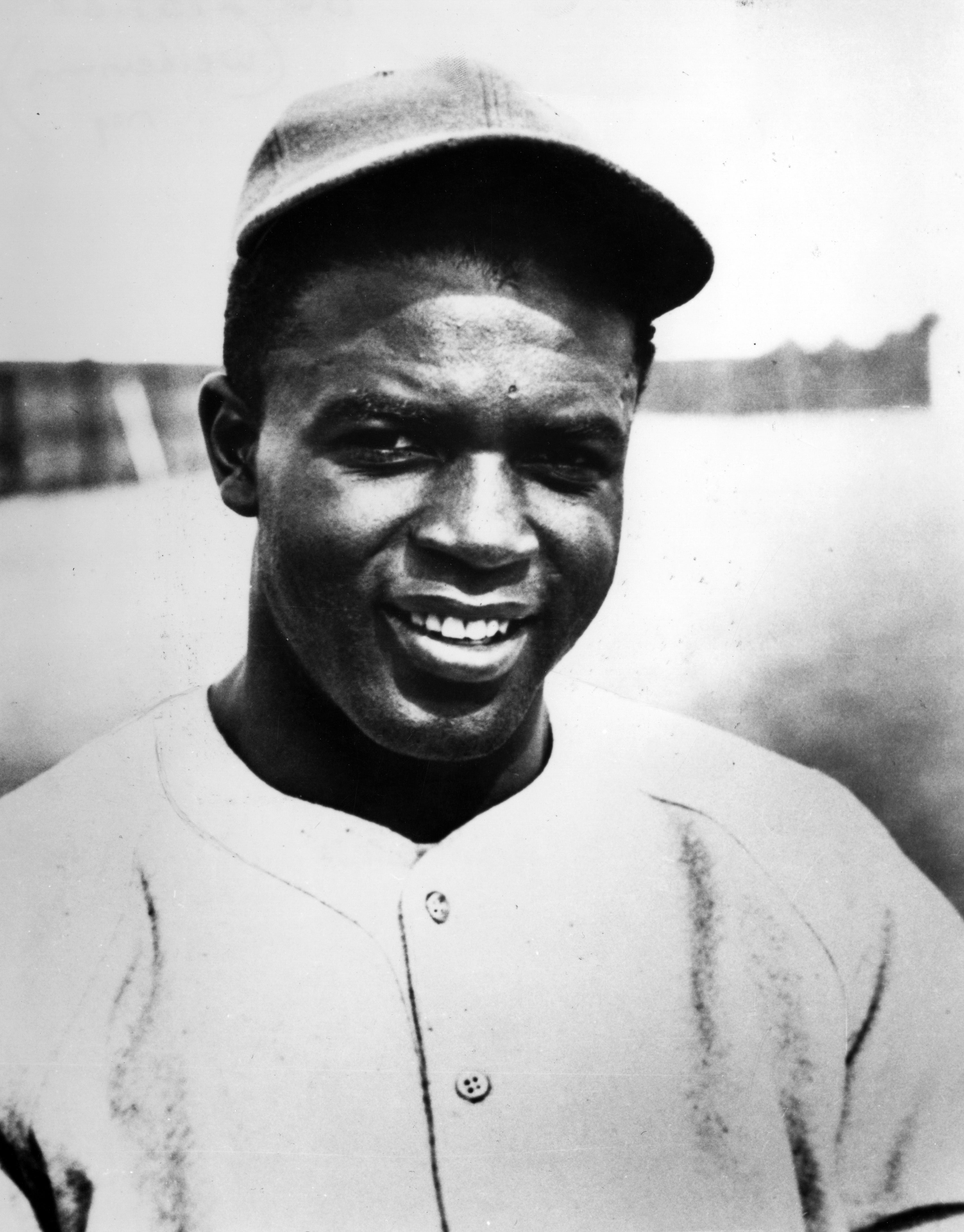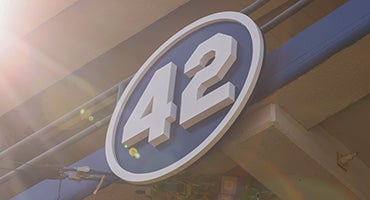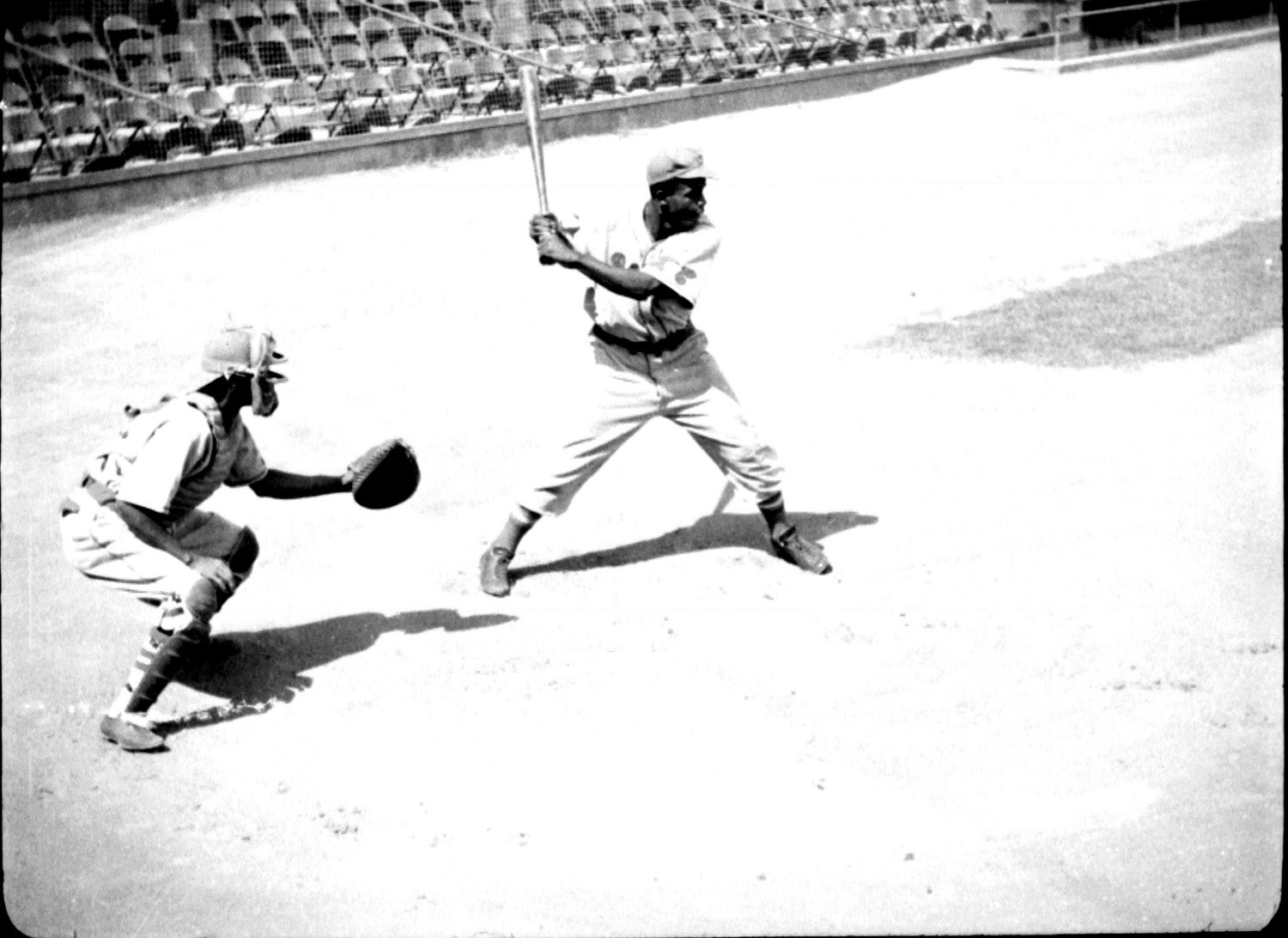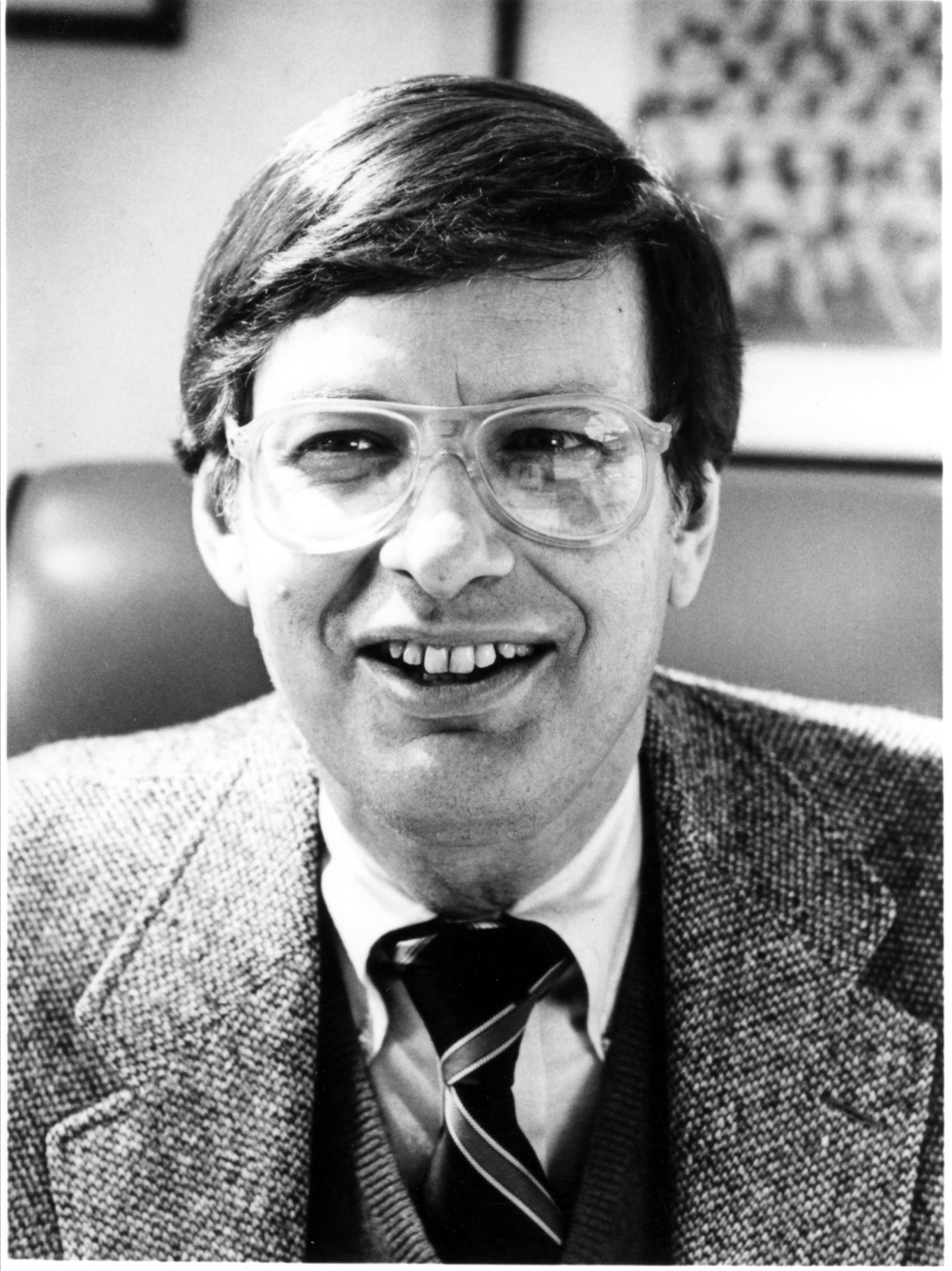- Home
- Our Stories
- #Shortstops: A Page in Time
#Shortstops: A Page in Time
It looks like your average ledger, most likely thicker than most, and filled with lined paper that that would at one time might have been used by a corner grocer or local postmaster to keep accounts in order.
But this particular one is unique, having recorded the day 72 years ago that the National Pastime changed forever.
In 2004, then Major League Baseball Commissioner Bud Selig announced that from that point forward “Jackie Robinson Day” would be celebrated in the big leagues every April 15 to honor the enduring impact of the Class of 1962 Hall of Famer. It was on April 15, 1947, that Robinson broke the color barrier and helped to open the game to everyone.
Donated by the National League to the National Baseball Hall of Fame and Museum in 1999, as part of a larger collection, was a post-and-beam ledger, 16.5 inches by 11.5 inches and 3 inches thick.
Hall of Fame Library records refer to them as the “Official Average Volumes,” but routinely are called the “day-by-days” in baseball research parlance. Its cover green with leather corners, embossed with “1947,” it has housed within it the day-by-day sheets for Robinson from that historic season, each day’s game recorded with meticulous handwriting and documenting forever the record of one of the sport’s truly iconic ballplayers.
“When I talk to people about these Jackie Robinson 1947 day-by-day sheets I call them the physical manifestation of the breaking of the color barrier. Here you have the defining moment. Once it’s recorded in this ledger in the National League office it makes it official,” said Hall of Fame vice president of exhibitions and collections Erik Strohl. “It’s a gateway artifact that allows us to educate baseball fans – intense or casual – by making a connection to something that has to do with American culture.
“The fact that we have all of these ledgers is amazing, but this one in particular allows us to access this story about baseball and American culture. This artifact has multiple layers – and not just about what happens on the field,” he added. “In this case, Jackie Robinson’s story is where baseball was ahead of the curve in leading the nation in this regard. So much of what we have in here is about cool baseball things, but this allows us to access the importance of baseball to culture in a wider lens.”
According to Strohl, after every big league game, an official scorekeeper was responsible for sending in a tally sheet of the statistics, which were transferred by hand on a team-by-team, player-by-player, day-by-day basis, with all column totals and averages calculated and noted in pencil. This was done every year through the mid-1980s, when MLB records were computerized.
The Hall of Fame now preserves dozens of these single-year day-by-day ledgers.
Robinson’s 1947 day-by-day records – a part of Hall of Fame Library tours for more than a decade – not only show that he played first base all season, but that he was hit by a pitch seven times by June 3 and only two more times during the season’s final four months.
When the first African-American player to play in the big leagues in the 20th century famously made his debut on April 15, 1947, a reported crowd of 25,623 at Ebbets Field saw Robinson take the field for the first eight innings as the Dodgers defeated the Boston Braves, 5-3. The first baseman went hitless in three at bats, but scored the winning run on Pete Reiser’s seventh-inning double.
In a New York Times column by Arthur Daley the next day, the longtime sportswriter wrote, “A veteran Dodger said of him, ‘Having Jackie on the team is still a little strange, just like anything else that’s new. We just don’t know how to act with him. But he’ll be accepted in time. You can be sure of that. Other sports have had Negroes. Why not baseball. I’m for him, if he can win games. That’s the only test I ask.’ And that seems to be the general opinion.”
The Times-Tribune from Scranton, Pa., on April 16, 1947, interviewed Robinson in the home clubhouse after the Opening Day victory, where the 28-year-old showed no outward nervousness having just made history.
“It felt good, very good,” said Robinson. “But they really think fast up here.”
Robinson wanted to make clear that he didn’t go hitless because of nerves.
“I wasn’t at all excited or scared,” Robinson said. “I was as loose as I could be. And I can’t honestly say that this was my biggest thrill in baseball. That came, I guess, when I signed with Montreal. But I would have liked a couple of hits.”
And Robinson wanted to make clear that nobody on the Braves had been “riding” him.
“If they did, I didn’t hear it,” he said. “As far as I’m concerned they can’t ride my any more than they did when I played football at UCLA or in the International League.”
As headed for the postgame shower, he looked upon on a pile of congratulatory telegrams waiting for him.
“Holy smokes,” he laughed, “somebody certainly got excited about this.”
When MLB announced the creation of “Jackie Robinson Day back in 2004,” Commissioner Selig said: “I have often stated that baseball's proudest moment and its most powerful social statement came on April 15, 1947 when Jackie Robinson first set foot on a Major League Baseball field. On that day, Jackie brought down the color barrier and ushered in the era in which baseball became the true National Pastime.
“By establishing April 15 as 'Jackie Robinson Day' throughout Major League Baseball, we are further ensuring that the incredible contributions and sacrifices he made – for baseball and society – will not be forgotten."
Bill Francis is the senior research and writing specialist at the National Baseball Hall of Fame and Museum


